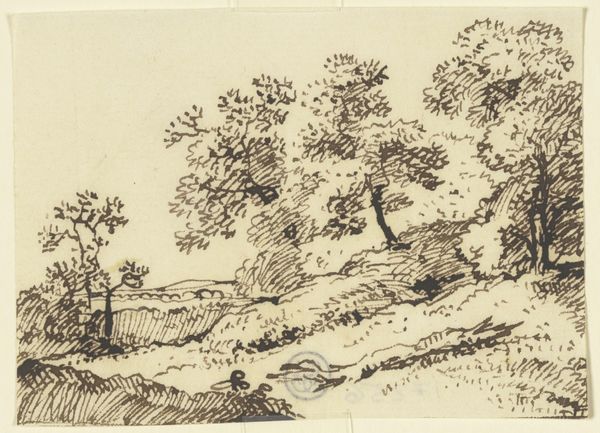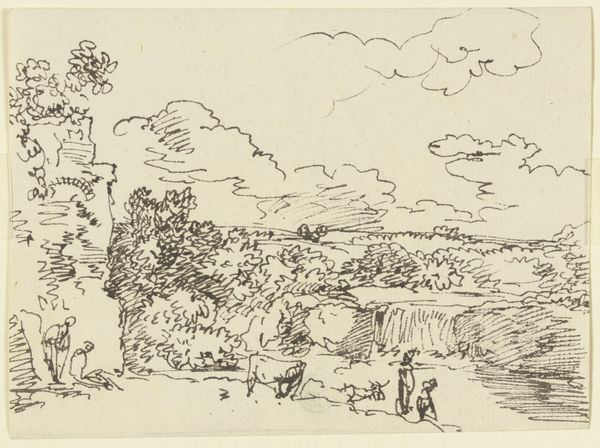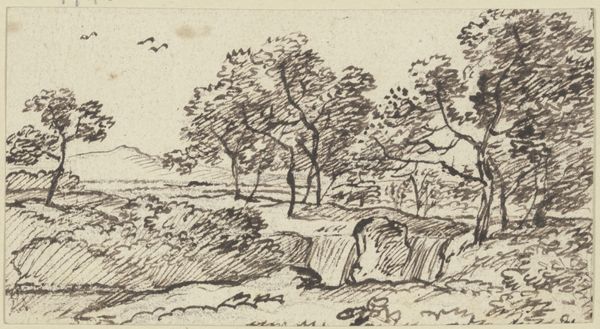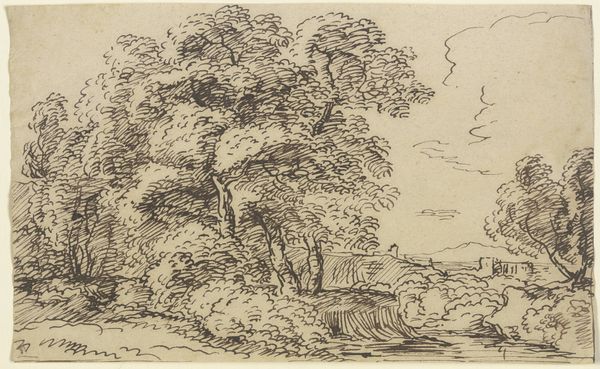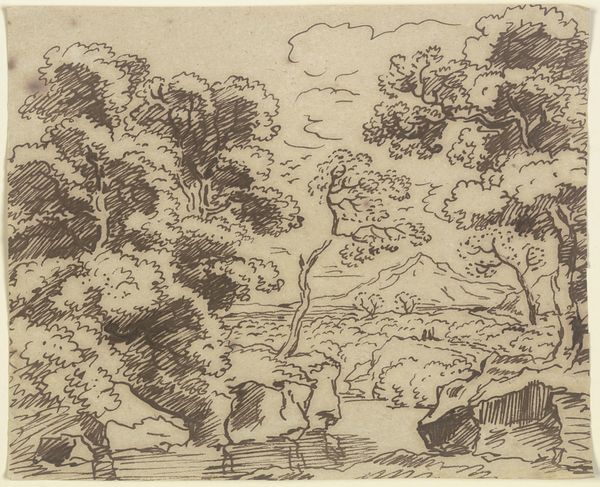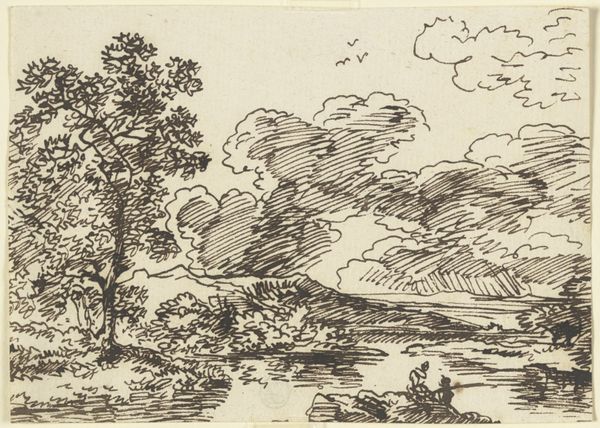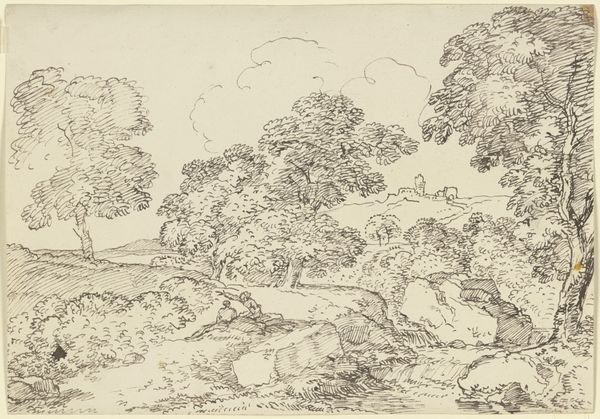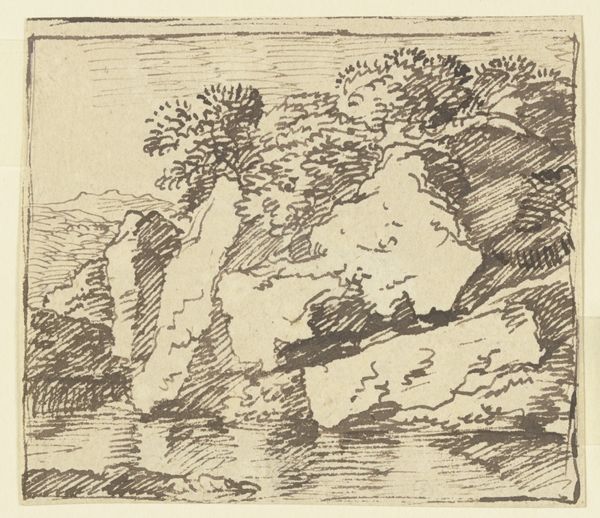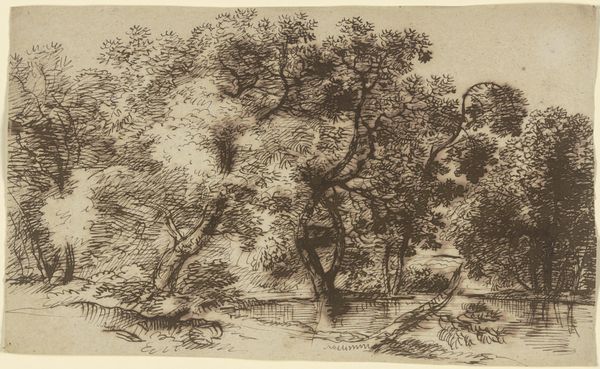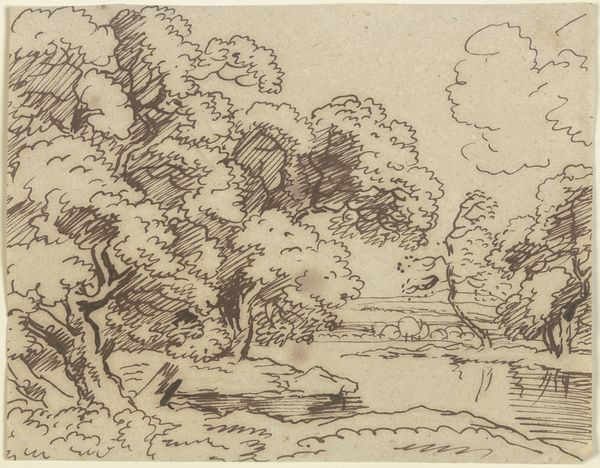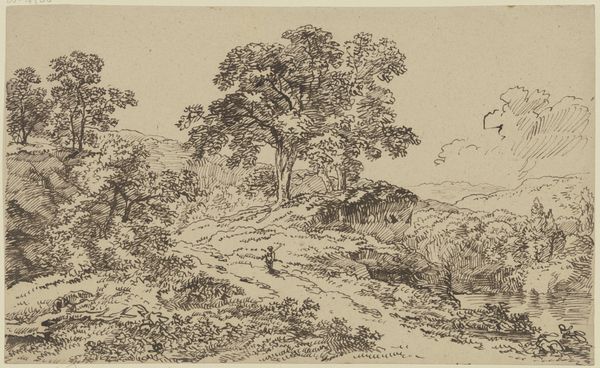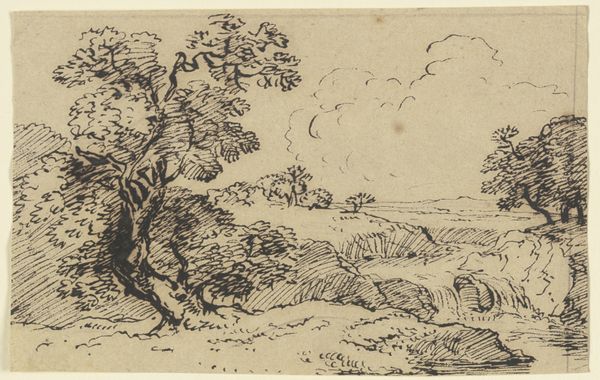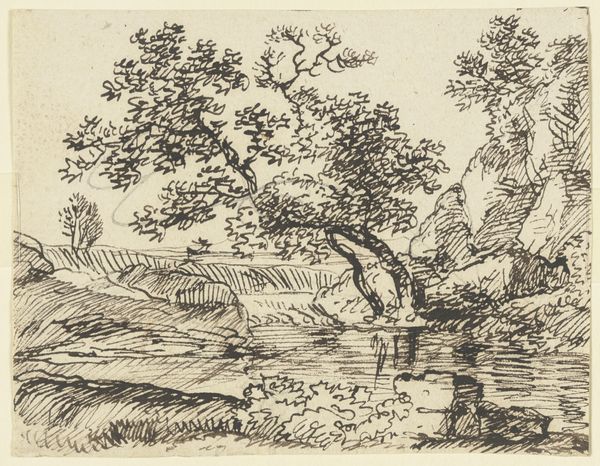
drawing, paper, ink
#
drawing
#
landscape
#
paper
#
personal sketchbook
#
ink
#
german
#
ink drawing experimentation
#
sketch
#
romanticism
#
15_18th-century
Copyright: Public Domain
Curator: This ink drawing, titled "Landschaft mit einem kleinen Wasserfall und zwei Rastenden," which translates to "Landscape with a Small Waterfall and Two Resting Figures," is attributed to the German artist Franz Kobell. It is currently held at the Städel Museum. Editor: It has such a calming effect on me. I am struck by the rapid, expressive lines; there is so much texture crammed into a relatively small space. It's almost as though I can hear the babbling brook. Curator: Yes, note how Kobell is using the material of ink, diluted to different degrees, to give depth and variety of the marks and texture, especially the rock faces and dense vegetation. Think of the supply chains required to even source paper and inks at the time. This wasn’t just conjured into existence. Editor: True, and consider the period context—late 18th century. The romanticising of nature was really taking hold. We have these two figures in the foreground, seemingly at one with their environment. It hints at a growing appreciation of nature's sublime power as an antidote to the burgeoning industrial world. Who has access to such idyllic places of 'rest' and escape is very loaded though. Curator: Exactly, and the layering is intriguing. He’s using varied mark-making to suggest different natural elements – stippling for bushes, vertical hatching for the waterfall, creating a rich material language. These aren't merely representational, but also investigations of what ink on paper can achieve. Editor: It is important also to recognise the historical gaze in landscape art. Depictions of seemingly untouched landscapes frequently overlook indigenous or working-class peoples. There's this notion of the solitary wanderer finding solace, a privileged experience, ignoring those whose labour or displacement might enable such 'romantic' interludes. Curator: It would be worthwhile knowing more about the support. The quality and type of paper influences the absorption of ink, affecting the final image. Was this a mass-produced sheet, or a specially prepared surface? Was the support in anyway created locally? These kinds of material choices inevitably inflect its reception and overall value. Editor: By framing the landscape within the broader historical narrative, and recognizing these elements of exclusion and class, the drawing reminds us to look critically, beyond a simple idyllic reading. I have fresh eyes. Thank you! Curator: Yes! And by thinking of its status as a crafted object, with careful decisions about production involved, we might view the landscape here with more engaged perspectives as well.
Comments
No comments
Be the first to comment and join the conversation on the ultimate creative platform.
